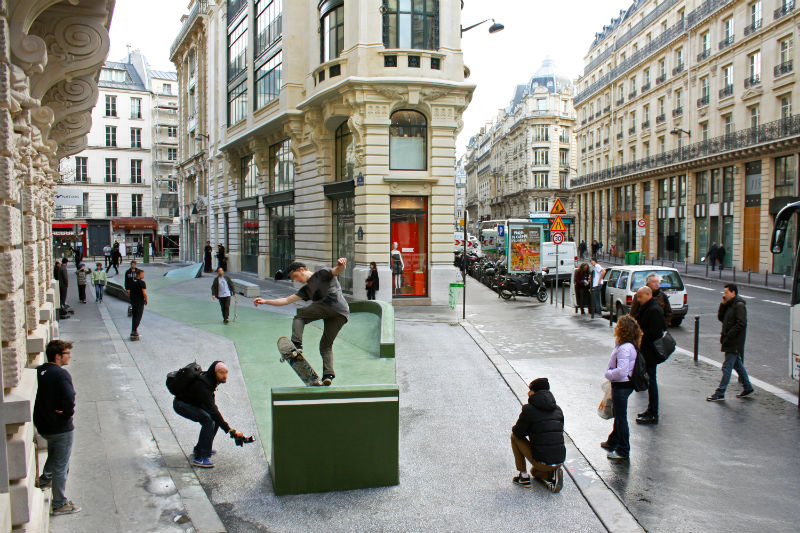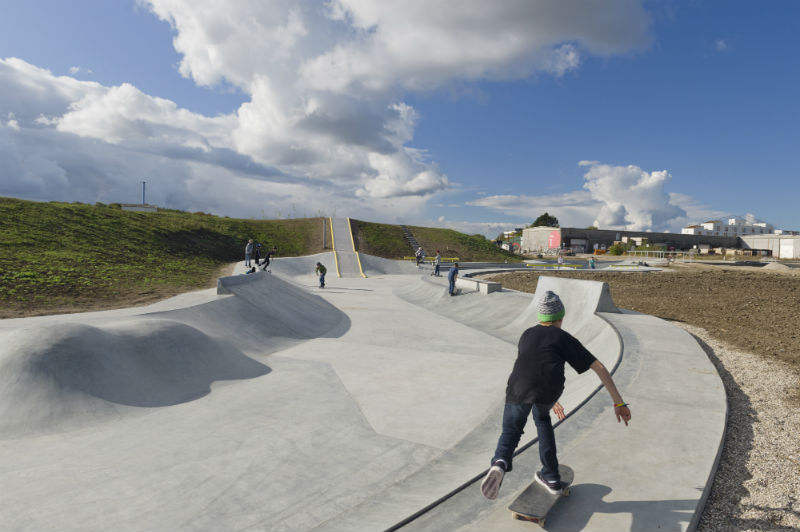Locating and integrating skate spaces
Providing for skate activity can be flexible in that it does not necessarily require a large, permanent facility or strict footprint shape. Small to large spaces can be utilised, and temporary and modular provisions can also be made. When providing for skate activity it is important to recognise that this activity can be loud, will involve use of a space with hard, smooth surfaces and users will move in a number of different directions. The design also needs to be progressive and fit for the end user. The amount of provision will need to respond to increasing population, demand and daily visitation forecasts.
In many parts of the City, public space is in demand and must provide for multiple shared uses. Spaces that cater to skating can also cater to other recreational pursuits such as BMX, scooter riding, inline skating or other active uses like free running or breakdancing. In some countries skate facilities provide other functions such as stormwater management, and increasing tree cover and biodiversity. Spaces for skating have also been linked with other services such as dedicated transport lanes, performance and event spaces, community services and food venues.
Rue Leon Cladel, Melun, Paris
This example from Paris provides for skate use in an underutilised street in the central city. It is integrated in a dense urban and pedestrianised environment and adjacent to a bus stop. The design of the space still allows for pedestrian, emergency vehicles and service vehicle accessibility.
Rabalder Parken, Roskilde, Denmark
Rabalder Parken is a skate park in Roskilde, Denmark. The 40,000 m2 park is integrated with a water management system which can transport and hold up to 23,000 cubic metres of water.
Ed Benedict Skate Plaza, Portland, Oregon, USA
Ed Benedict Skate Plaza in Portland was designed collaboratively with local skaters and artists. Besides providing skate-able spaces, the final design enhanced biodiversity and storm water management in the area.









